Borrowdale Valley
Borrowdale Valley lies a few miles south of Keswick, extending from the south shore of Derwentwater to Honister Pass. Once bustling with industrial activity, today Borrowdale is famous for its spectacular natural features and breathtaking views.

The valley now offers a wide range of holiday accommodations, including hotels, B&Bs, cottages, glampsites, and campsites. Borrowdale attracts hikers, climbers, and outdoor enthusiasts. The area also features the picturesque villages of Grange, Rosthwaite, and Seatoller.
Ashness Bridge
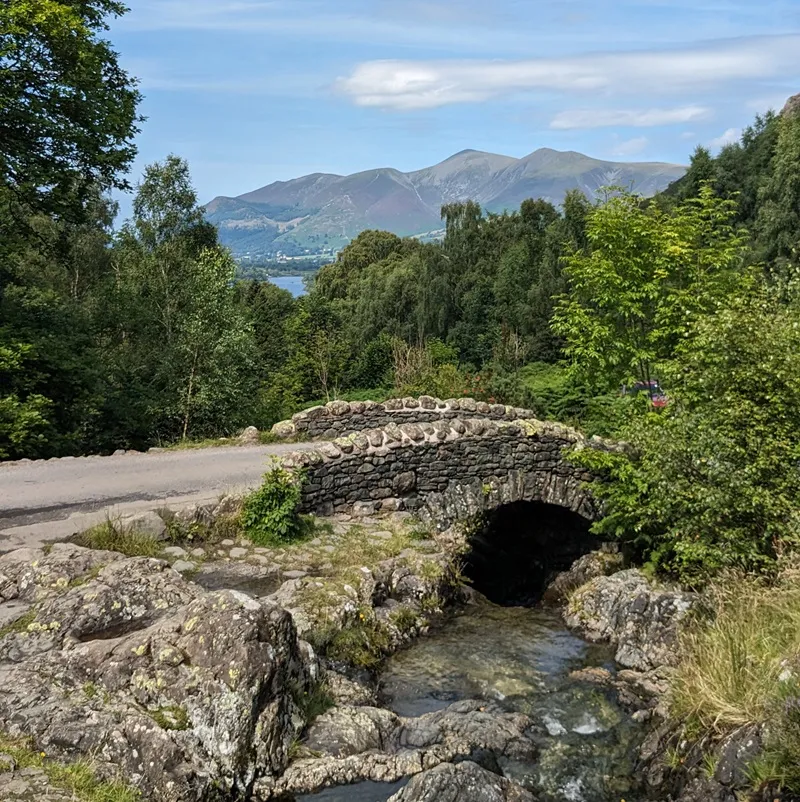
Photographers and artists visiting the area have long favored Ashness Bridge for its picturesque stone structure and stunning views of Derwentwater and Skiddaw in the distance. The narrow tarmacked road to Ashness Bridge turns left off the B5289 Borrowdale Road approximately 2.4 miles south of Keswick.
Built in the 18th century as a packhorse bridge, Ashness Bridge played a crucial role in the daily lives of local farmers and shepherds, helping them move livestock around the rugged terrain. In the 19th century, builders added a low parapet, and in the 20th century, they widened the bridge to allow vehicle crossings. The roads in the area remain twisting and narrow, posing challenges for larger vehicles.
Ashness bridge is now maintained by the National Trust, and there is a convenient car park just a minutes’ walk away.
Surprise View, Borrowdale
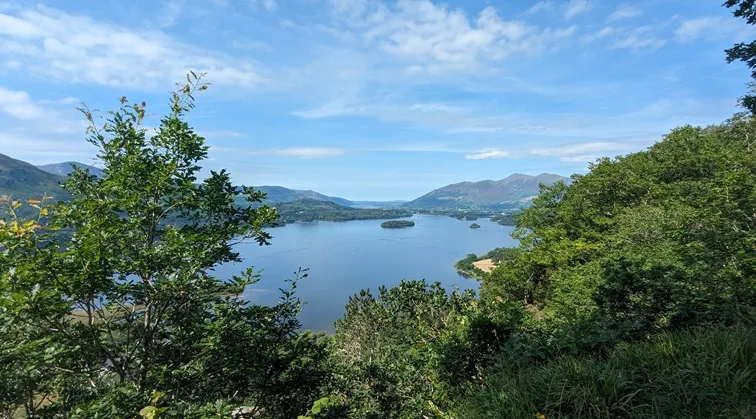
Just beyond Ashness Bridge, the trees give way to a stunning view over Borrowdale, Derwentwater, and the surrounding fells. This spot, known as Surprise View, earns its name from the sudden reveal and the awe it inspires in visitors. As you arrive at the viewpoint, the breathtaking scenery unfolds, offering one of the most spectacular panoramas in the Lake District. Initially popularized when roads and paths were developed in the area, Surprise View has become a favorite stop for walkers and visitors alike.
The National Trust has a car park located at the site
Continuing past Surprise View a narrow road leads to Watendlath, a hamlet beside the tarn of the same name. The track is also a popular walk.
Local livestock on the road from Ashness Bridge and Surprise View to Watendlath
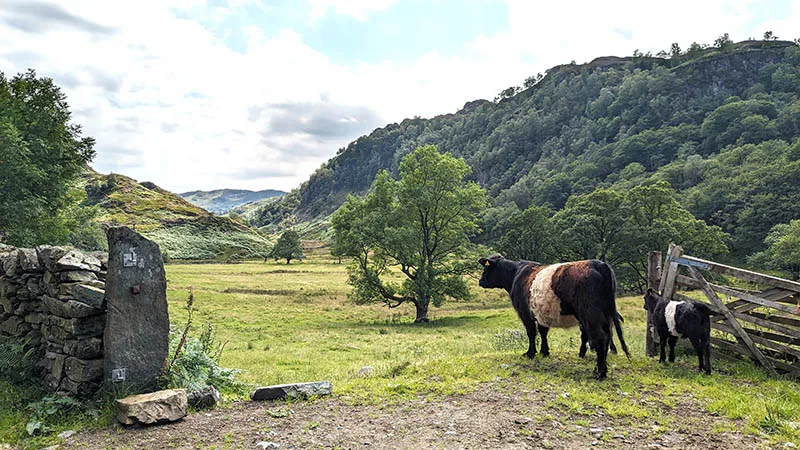
Watendlath
Just over 2 miles beyond Ashness Bridge and Surprise View, you’ll find the tiny hamlet of Watendlath. Nestled 847 feet (258 meters) above sea level, it rests in a small hanging valley beside a tranquil tarn that shares its name.
The small packhorse bridge over Watendlath beck which flows from the tarn
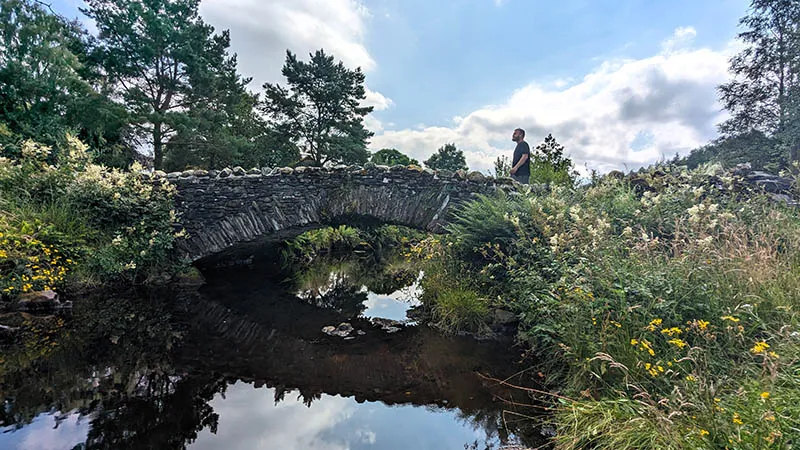
The name “Watendlath” comes from the old Nordic “vatn-endi-hlaoa,” meaning “old water barn.” This, along with the ancient dry-stone walls and farm buildings, highlights the area’s rich agricultural history.
As you explore Watendlath, you’ll discover it’s a popular spot for walkers, serving as a key stop or starting point for trails leading to places like Dock Tarn and Great Cragg.
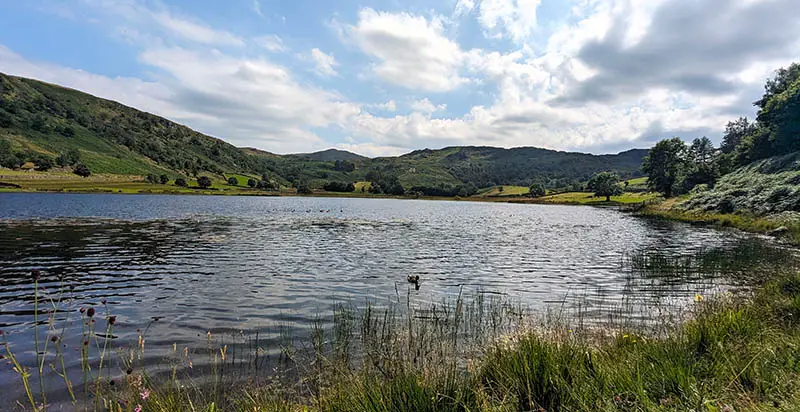
The natural 7-acre tarn attracts anglers, known for its fly-fishing opportunities for rainbow and brown trout. The tarn’s banks offer excellent fishing spots, and boat rentals are available nearby. The fishery operates year-round, with autumn generally considered the best season (confirmation of current operation pending).
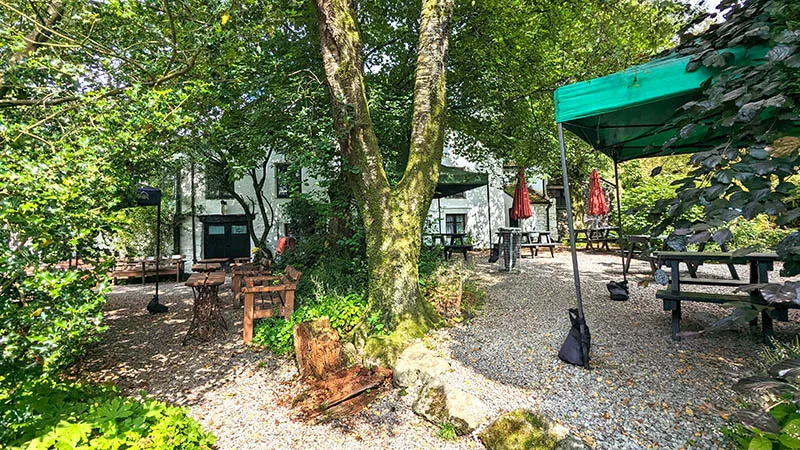
While in the hamlet, visitors often stop by the Caffle House Tearooms, housed in a historic farm building. The tearooms serve hot drinks, scones, cream teas, cakes, and light lunches. On warm days, bird lovers delight in the sparrows that hop around the outdoor tables in search of crumbs. For those who prefer indoor comfort, seating and tables are also available inside.
The Bowder Stone
This 2,000-ton stone, towering 30 feet high and stretching 50 feet across, appears to rest in a delicate balance. As the glacier that once nearly filled Borrowdale retreated, this local rock toppled into its current position. While the precise age of the rock fall remains uncertain, experts estimate it occurred around eighteen thousand years ago.
The image below was taken in August 2024: compare to the 1890 picture below
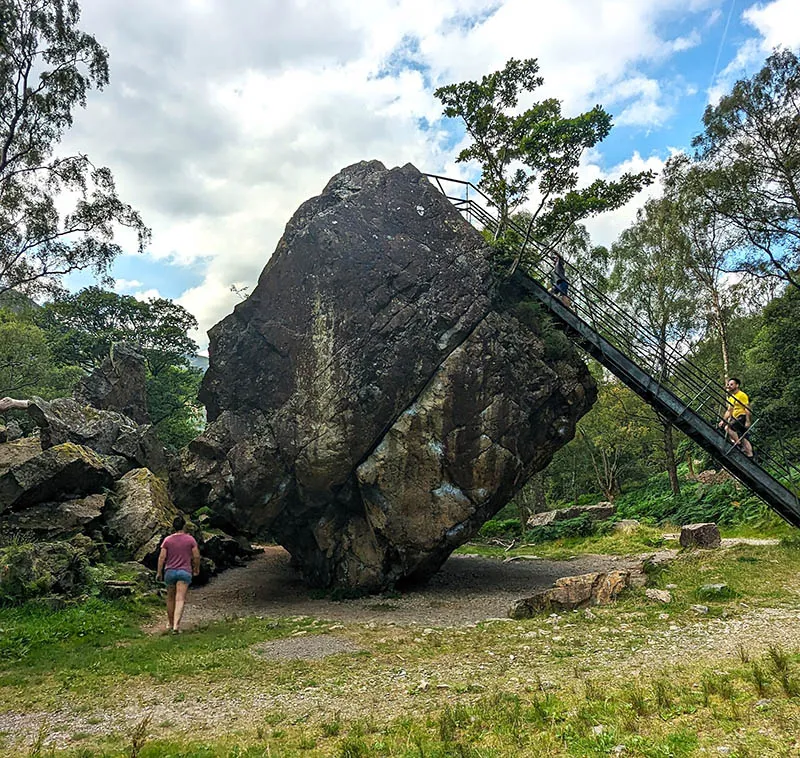
The founders of the National Trust envisioned preserving places of beauty and historic significance as memorials to those who had passed away. Following this vision, Grange Fell was purchased, including the Bowder Stone, and a memorial stone to King Edward was placed on the fell. Eight years earlier, Princess Louise had opened Brandlehow Wood, marking the Lake District’s first National Trust acquisition.
The image below, a postcard of the Bowder Stone from 1890, demonstrates the reforestation of the Borrowdale valley
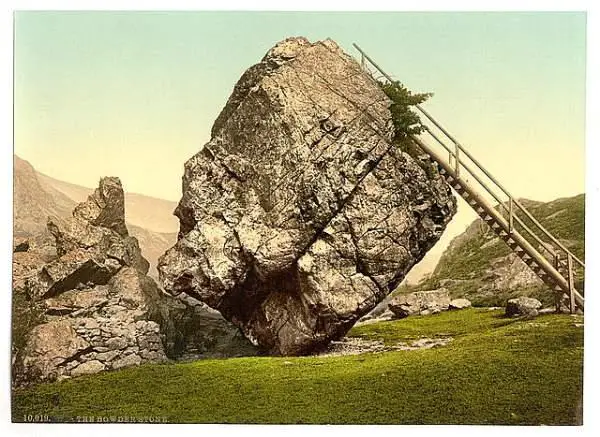
Today, the Bowder Stone is a well-known destination for rock climbers, as is the nearby Bowder Stone Crag. Bouldering, or climbing without ropes, is popular here, with climbers sometimes using mattresses to cushion falls while attempting the overhang.
To visit, travel approximately five miles south of Keswick. From the National Trust car park (SatNav CA12 5XA) on the Keswick to Borrowdale road near Grange., it’s a short, level walk to the stone. The 78 Borrowdale bus from Keswick also stops near the path’s entrance. A ladder allows you to climb to the top of the Bowder Stone.
Grange in Borrowdale
The village of Grange in Borrowdale sits at the entrance to the ‘Jaws of Borrowdale,’ where the valley narrows between Grange Fell and Castle Crag. As you enter the village, you’ll cross the double-arched bridge over the River Derwent, built in 1675. However, Grange’s history dates back even further. In medieval times, the monks of Furness Abbey, who owned this part of the valley, established a farm, or grange, here.
The image below shows one of the two arches of Grange Bridge
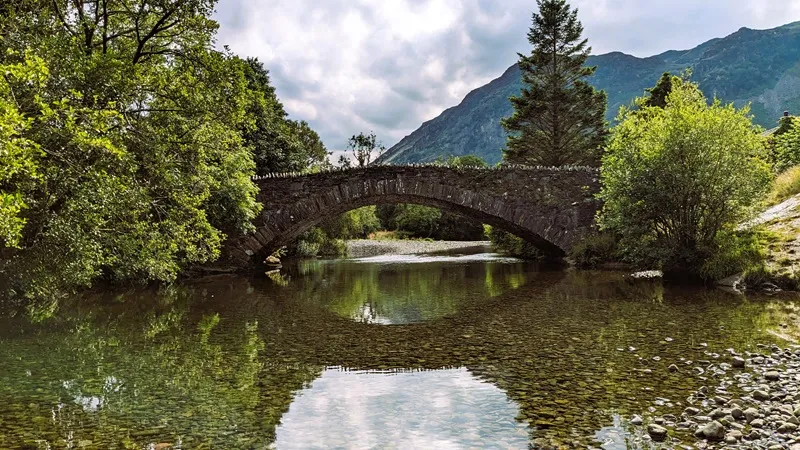
Grange lies equidistant between England’s highest mountain, Scafell Pike, and its third-highest, Skiddaw, with the second-highest, Helvellyn, just half an hour away.
The bright whitewashed walls of Holy Trinity Church, built in 1861 with a bell tower, light up its interior. The curved roof features imitation Norman dogtooth decoration, adding to its charm. Additionally, the tiny Methodist Church, constructed in 1878 from local green stone, adds to the village’s historic appeal.
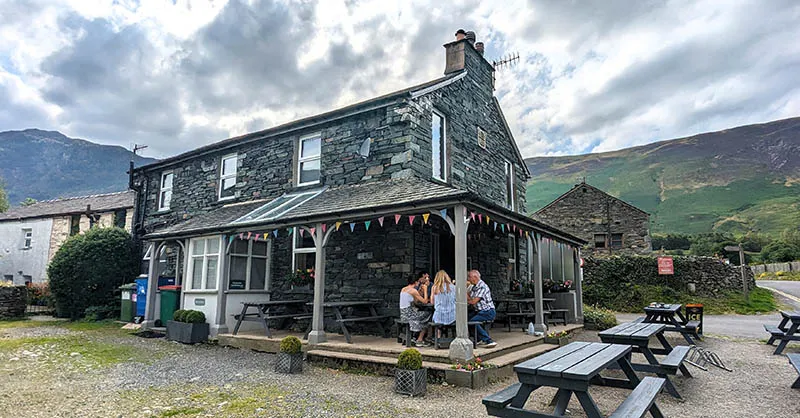
Grange also offers a busy tearoom where visitors can enjoy hot drinks, cakes, and light lunches.
King Edward VII Monument
After King Edward VII died in 1910, his sister, Princess Louise, President of the National Trust, decided to purchase the viewpoint of Grange Fell in Borrowdale. She wanted to make it a public gift through the National Trust in memory of the late King.
With strong public support, the necessary funds were quickly raised, leading to the purchase of Grange Fell. This acquisition included Bowderstone Cottage and the popular tourist attraction, The Bowder Stone.

The inscription on the monument reads :
In loving memory of King Edward VII Grange Fell is dedicated by his sister Louise as a sanctuary of rest and peace. Here may all beings gather strength. Find in scenes of beautiful nature a cause. For gratitude and love to God giving them. Courage and vigour to carry on his will
You can reach the monument by following a public footpath, and once at the top, you’ll enjoy a magnificent view of Grange and Derwentwater.
Lodore Falls, Borrowdale
Lodore Falls are situated behind the Lodore Falls Hotel, near the Grange end of Derwentwater. Located about three miles south of Keswick, the falls lie roughly midway between the turn to Ashness Bridge and Grange village

The waterfall, a popular attraction for Victorian tourists staying in Keswick, is created by the beck from Watendlath Tarn as it cascades over massive boulders for nearly 100 feet. While the falls are breathtaking after heavy rain, they reduce to a trickle during extended dry spells.
Robert Southey’s famous onomatopoeic poem ‘How does the water come down at Lodore’ is, of course, written about these falls.

Go to Borrowdale photo gallery >>
Menu :
Grid Ref : NY 260150
Planning a visit to Borrowdale? See location marker below and enter your dates to see available accommodation on a handy map

